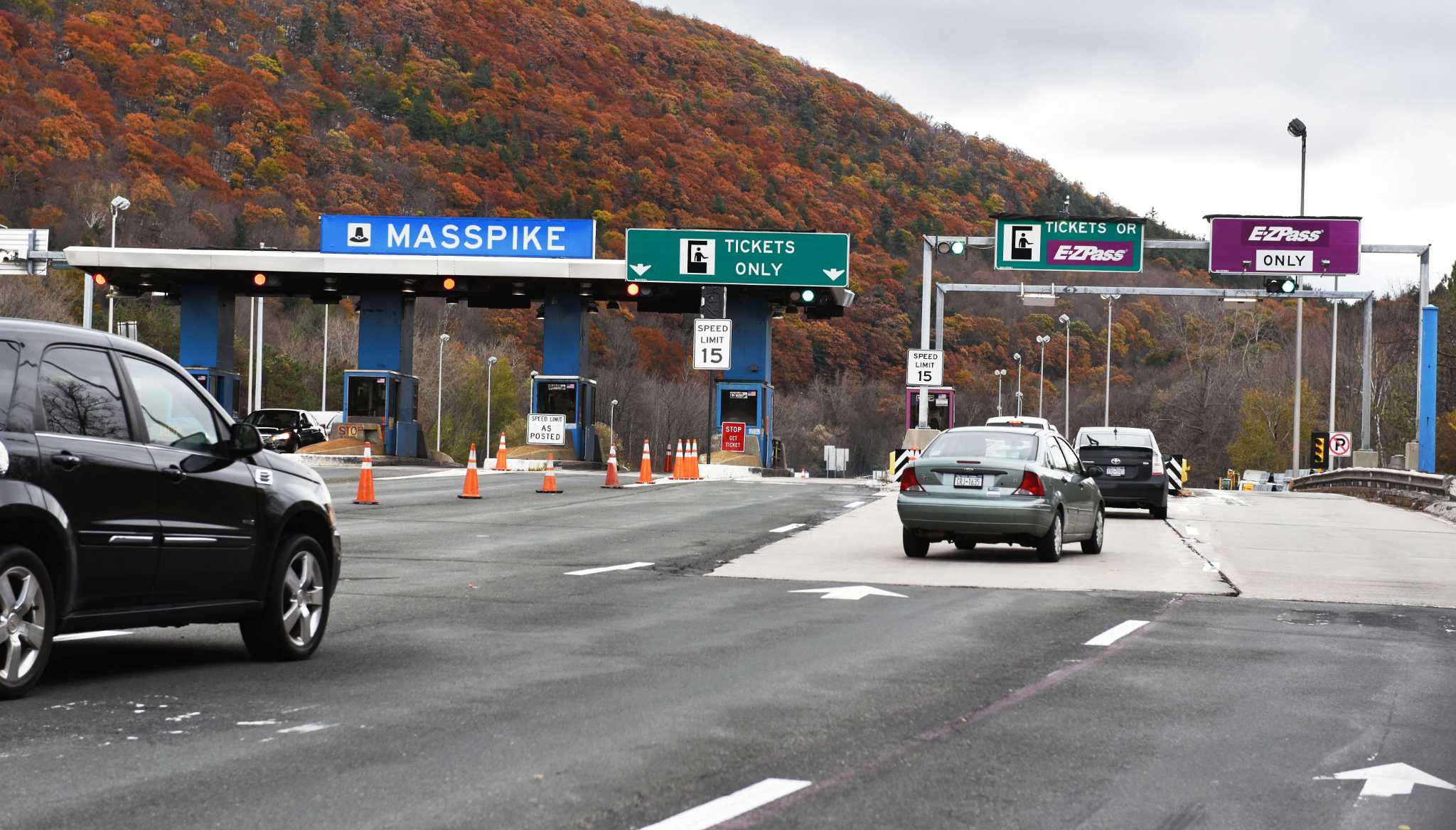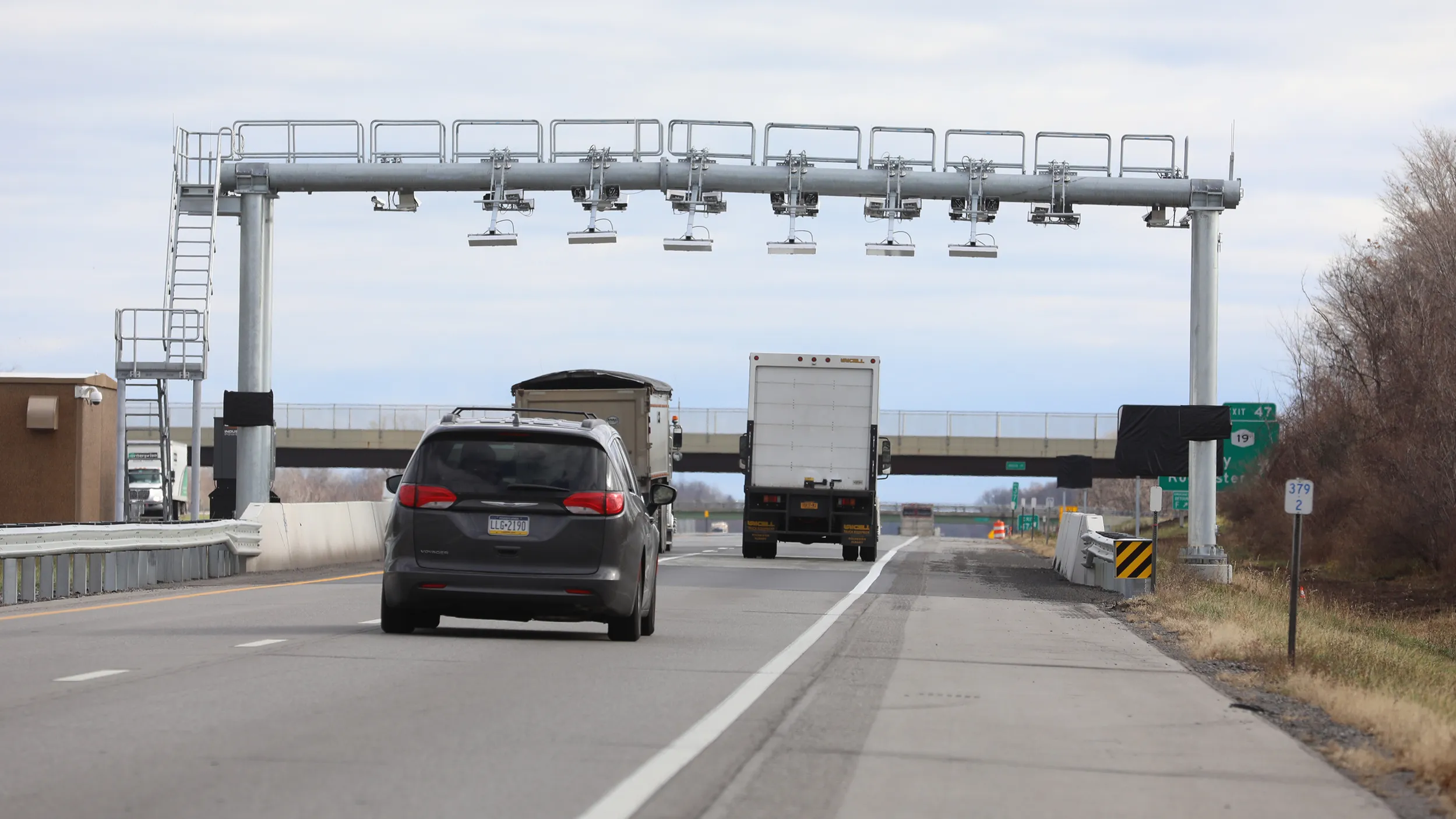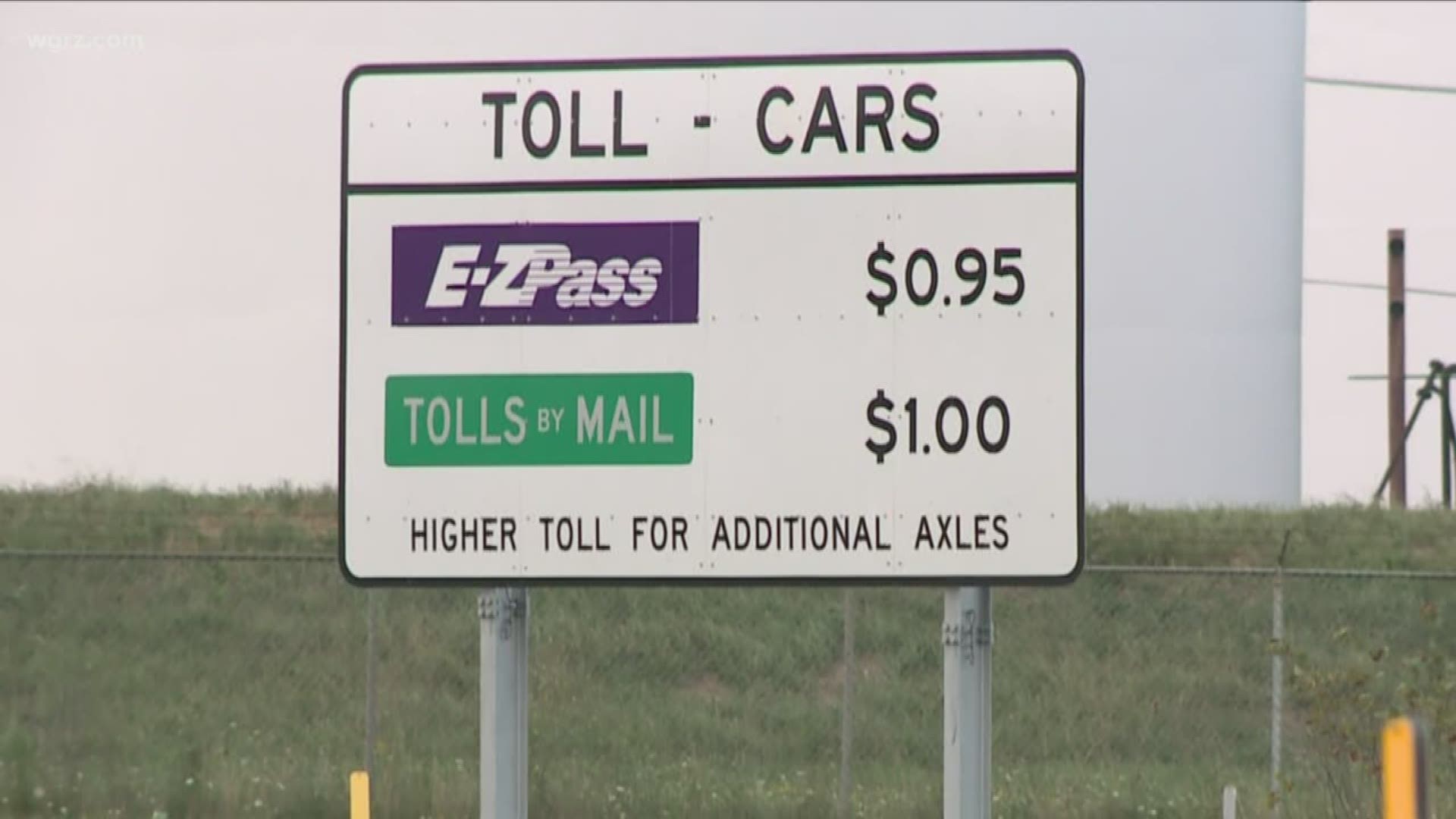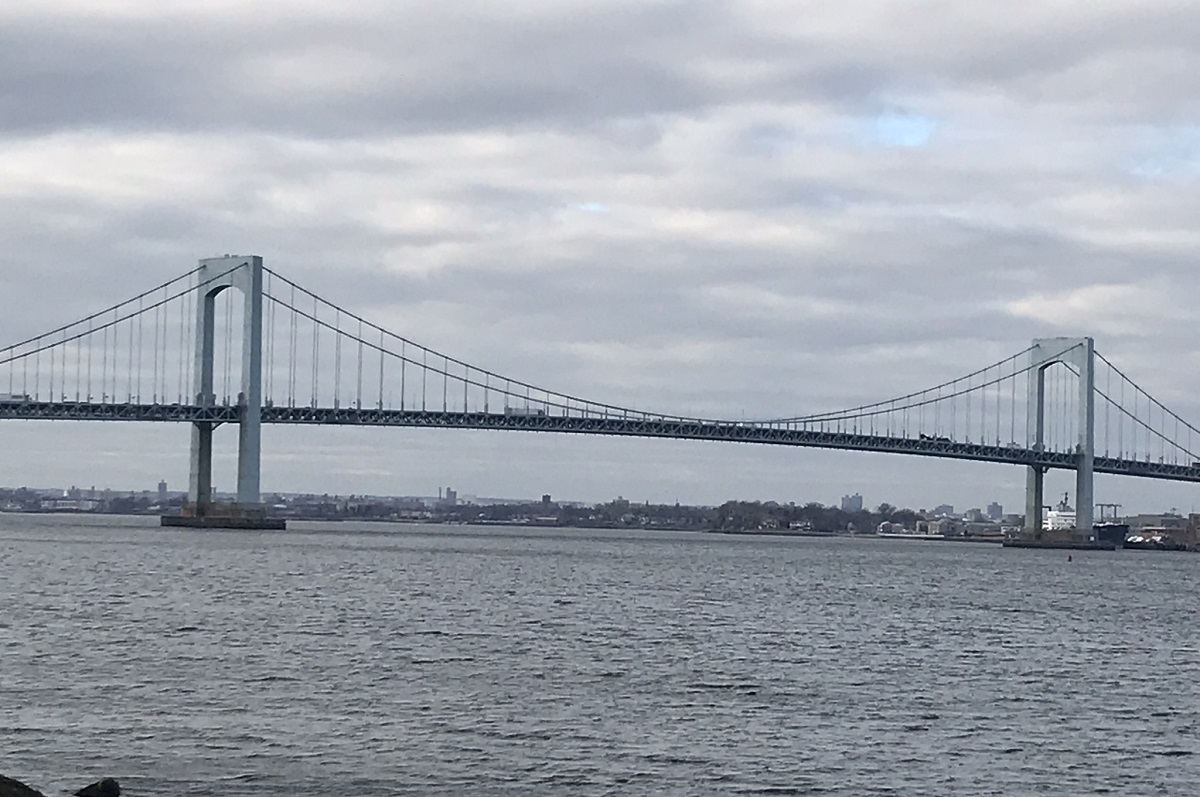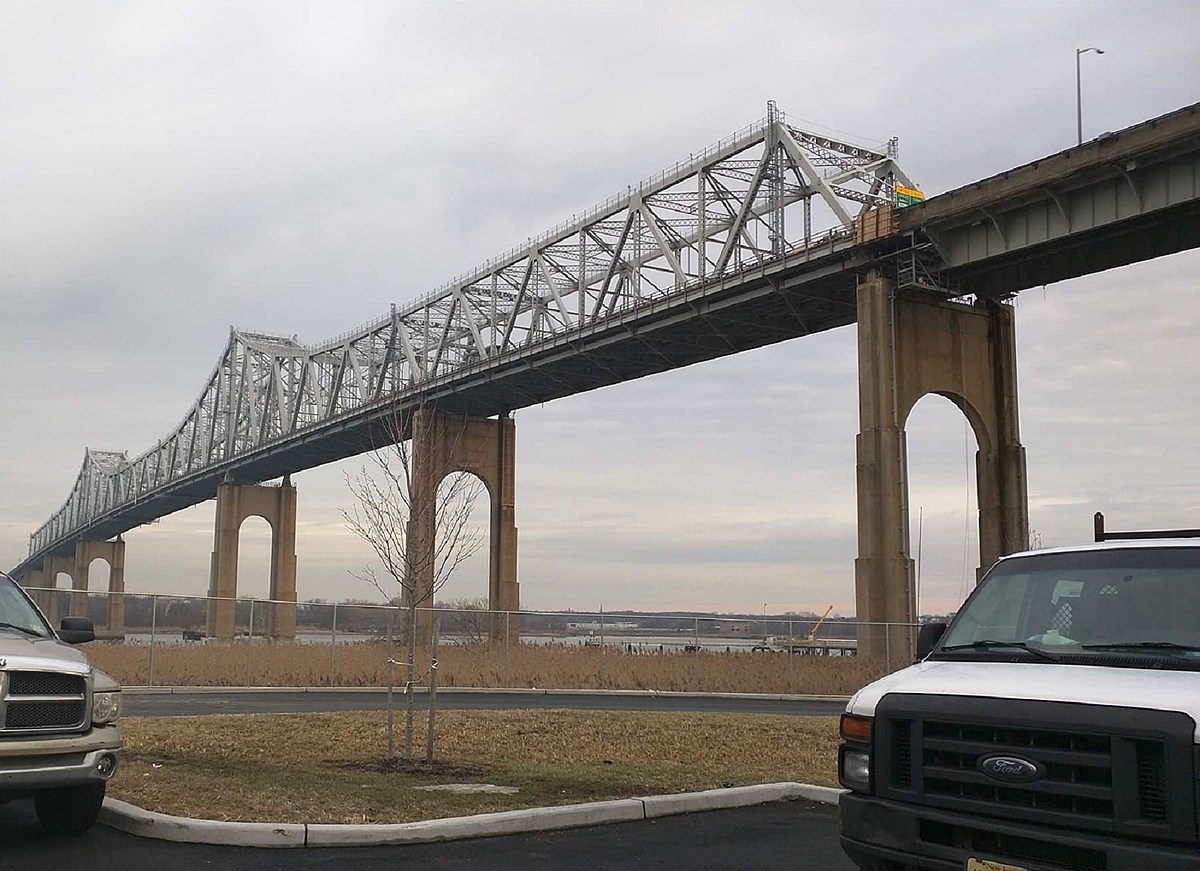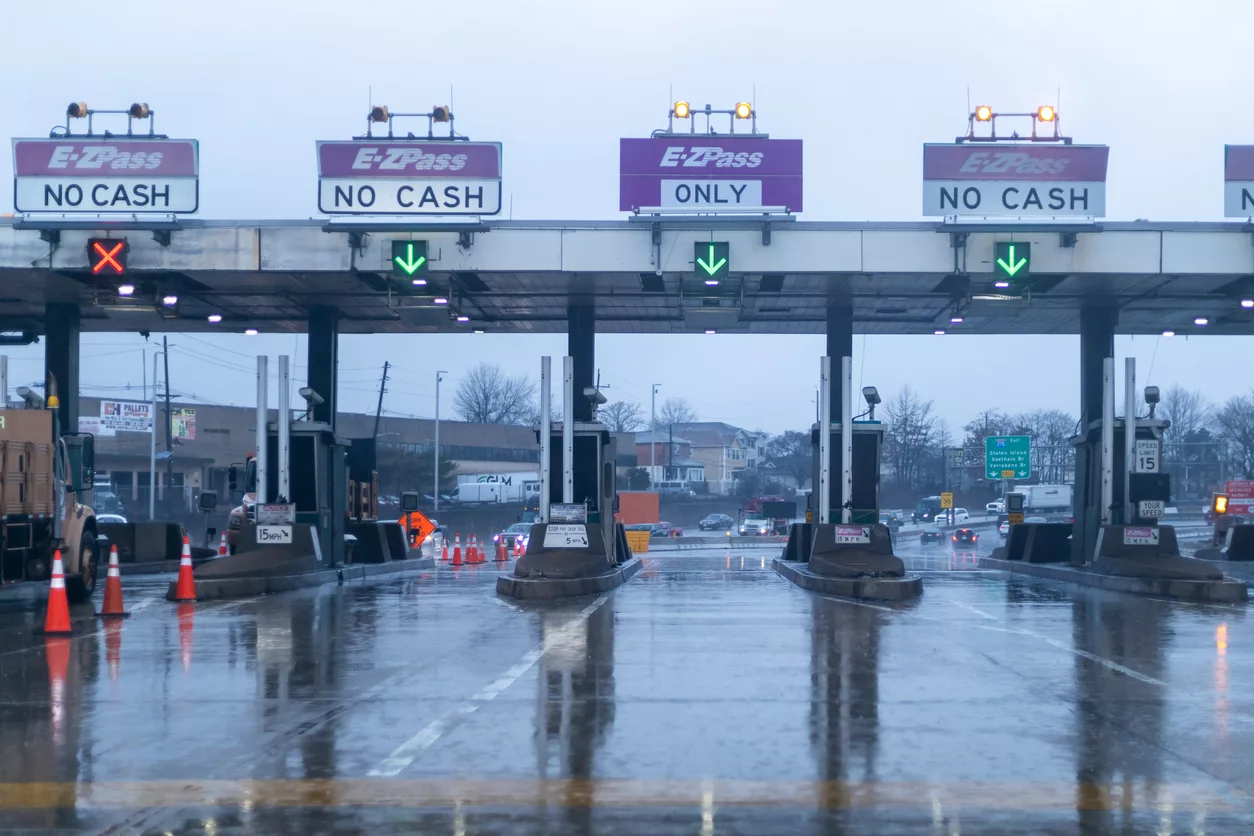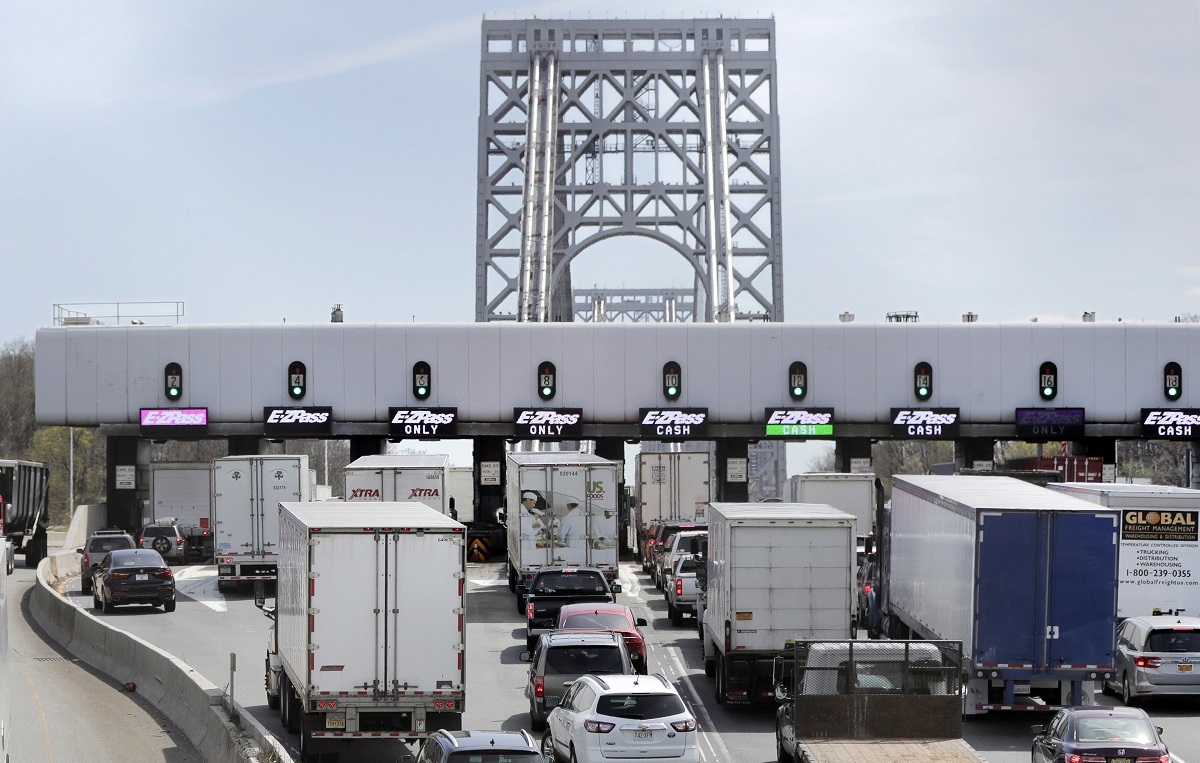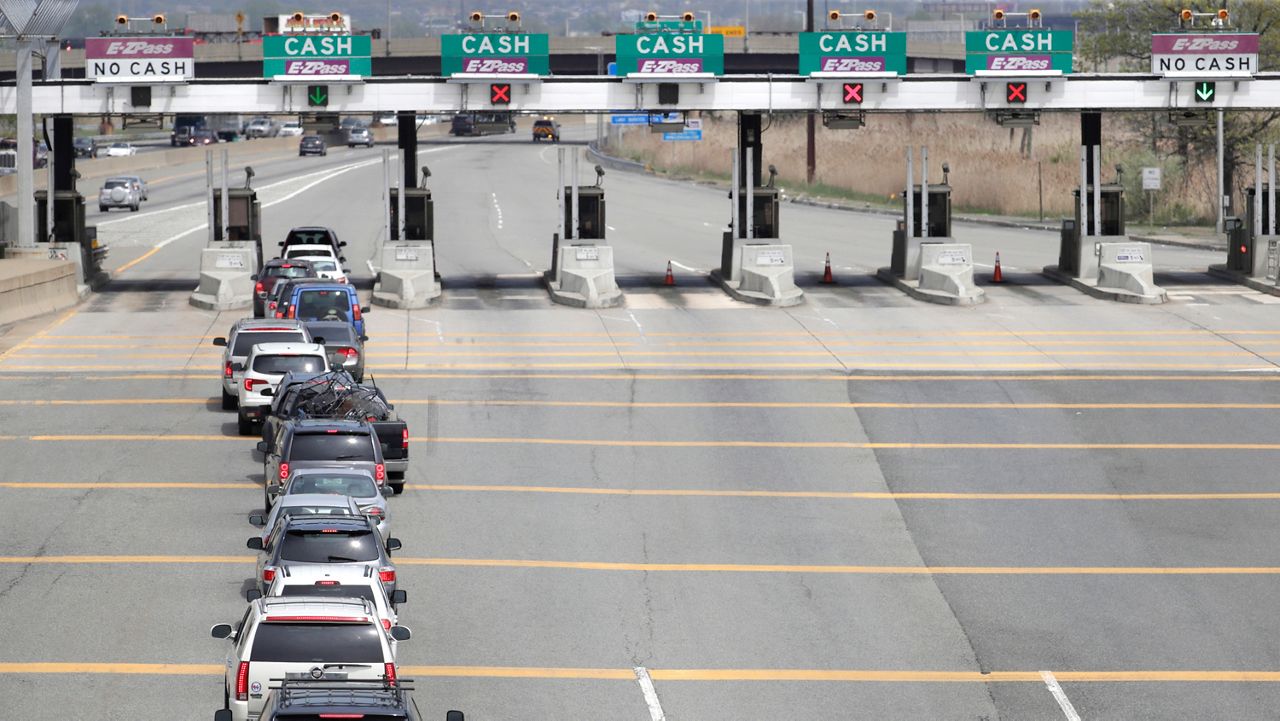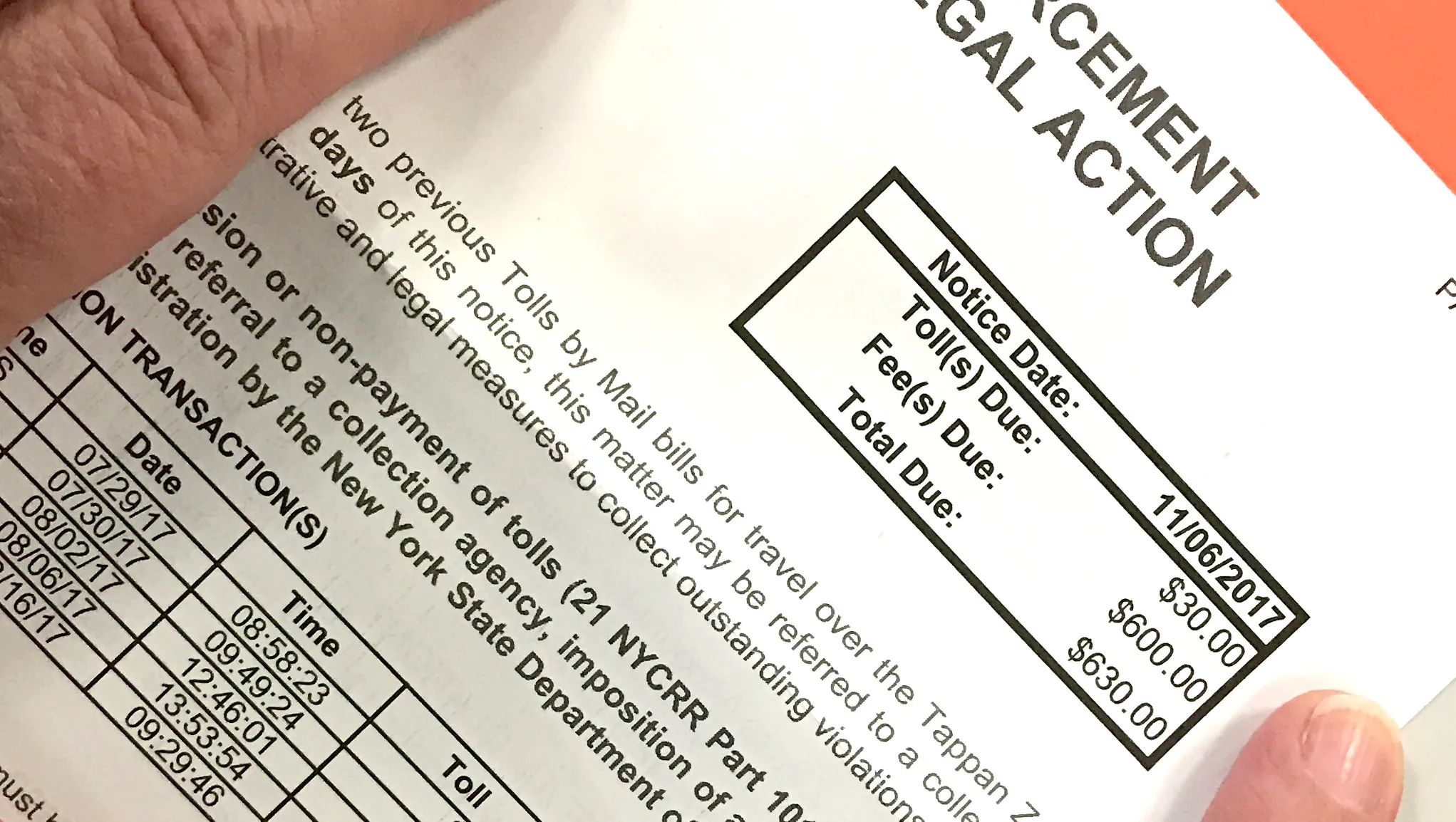Introduction
Welcome to Massachusetts, where the future of toll collection is becoming increasingly cashless. Gone are the days of scrambling for loose change or fumbling for bills to pay tolls on the state’s highways and bridges. With the implementation of cashless tolling systems, navigating the toll roads in Massachusetts has become more convenient and efficient than ever before.
But what exactly are cashless tolls? How do they work? And where can you find them in the Bay State? In this article, we will explore the concept of cashless tolling, the benefits it brings, and the locations across Massachusetts where you can experience this innovative method of collecting tolls.
Cashless tolling is a system that eliminates the need for drivers to stop and pay tolls in cash at each toll booth. Instead, it relies on electronic toll collection methods, such as E-ZPass or license plate recognition technology, to automatically charge the toll to the driver’s account or generate a bill if the vehicle is not registered with a toll payment system.
The shift towards cashless tolls brings a host of benefits. Firstly, it eliminates traffic congestion caused by the need to stop and pay tolls, allowing for a smoother traffic flow and reduced travel times. Secondly, it improves safety by minimizing the risk of accidents that can occur at toll plazas. Lastly, it enhances operational efficiency for toll authorities by reducing the costs and maintenance associated with traditional toll booths.
Now that we understand the concept and advantages of cashless tolls, let’s take a closer look at the specific locations in Massachusetts where you can experience this streamlined and convenient method of toll collection.
What are Cashless Tolls?
Cashless tolls are a modernized method of collecting toll payments on highways, bridges, and tunnels. Unlike traditional toll booths where drivers stop and pay in cash, cashless tolling systems use electronic methods to automatically collect tolls, improving efficiency and reducing congestion on the roads.
There are two primary methods of implementing cashless tolls: electronic toll collection (ETC) and license plate recognition (LPR) systems. ETC systems, such as E-ZPass, utilize a small electronic device attached to the windshield of a vehicle. When the vehicle passes through a designated tolling point, the device communicates with sensors to deduct the toll amount from a prepaid account. LPR systems, on the other hand, rely on high-speed cameras to capture the license plate of the vehicle as it passes through the tolling point. The registered owner of the vehicle is then billed for the toll amount.
With cashless tolls, there is no need for drivers to stop their vehicles, roll down their windows, and exchange cash with toll booth operators. This not only saves time but also reduces the risk of accidents and traffic congestion at toll booths. By eliminating the need for cash handling and manual toll collection, cashless tolling systems can process a higher volume of vehicles with increased efficiency.
In addition to the convenience and efficiency benefits, cashless tolls also offer improved environmental sustainability. The reduction in idling times and elimination of the need for toll plazas can significantly reduce fuel consumption and air pollution. With smoother traffic flow and reduced congestion, cashless tolling systems contribute to a greener and more eco-friendly transportation infrastructure.
Overall, cashless tolls provide a more seamless and hassle-free experience for drivers by eliminating the need for cash payments and toll booth stops. As technology continues to advance, more states and countries around the world are embracing cashless tolling as the future of toll collection, offering improved efficiency, convenience, and environmental sustainability on the roads.
Benefits of Cashless Tolls
Cashless tolls offer numerous advantages compared to traditional cash-based toll collection systems. These benefits extend to both drivers and toll authorities, making cashless tolling an increasingly popular choice in many states and countries. Here are some of the key benefits:
1. Convenience: Cashless tolling eliminates the need for drivers to carry and exchange cash at toll booths. With electronic toll collection systems like E-ZPass, drivers can seamlessly pass through tolling points without needing to stop, roll down windows, or interact with toll booth operators. This streamlines the journey and reduces travel times, especially during peak traffic hours.
2. Reduced Congestion: By eliminating the bottleneck caused by toll booths, cashless tolls contribute to reduced congestion and smoother traffic flow. Without the need to stop and pay at toll plazas, vehicles can maintain a steady speed, leading to more efficient travel and reduced delays on the roads.
3. Enhanced Safety: Traditional toll booths are often prone to accidents, especially during busy periods when drivers are required to quickly merge or change lanes. With cashless tolling, the risk of collisions and rear-end accidents is significantly reduced since drivers can pass through the tolling points without sudden stops or lane changes.
4. Environmental Benefits: Cashless tolls promote sustainability by reducing carbon emissions and fuel consumption. The elimination of idling times and the removal of toll booths contribute to a more efficient use of fuel, resulting in a decrease in air pollution and a more eco-friendly transportation system.
5. Cost Savings: Cashless tolling systems are more cost-effective for toll authorities. Traditional toll booths require regular maintenance, staffing, and collection of cash, which can be expensive and time-consuming. Cashless tolling eliminates these costs, allowing toll authorities to allocate resources more efficiently and invest in improving road infrastructure.
6. Improved Accuracy: Cashless tolling systems rely on automated technology to accurately identify and record toll payments. This reduces the chances of human error in toll collection and ensures that drivers are charged the correct amount for their passage.
Overall, the adoption of cashless tolling systems brings convenience, efficiency, safety, and environmental benefits to both drivers and toll authorities. As a result, more states and countries are embracing this innovative method of toll collection to enhance the overall transportation experience for all road users.
Locations of Cashless Toll Roads in Massachusetts
Massachusetts has implemented cashless tolling systems on several major highways, bridges, tunnels, and roads across the state. These locations offer drivers the convenience of seamless toll collection without the need to stop and pay in cash. Here are some of the key locations where cashless tolls are in operation:
1. Massachusetts Turnpike (I-90): The Massachusetts Turnpike, also known as I-90, is a major east-west highway that crosses the state. The entire length of the Massachusetts Turnpike implements cashless tolling, allowing drivers to travel seamlessly without stopping to pay tolls. Toll prices vary based on the distance traveled on the Turnpike.
2. Tobin Bridge: The Tobin Bridge, connecting Boston to Chelsea, is a significant route for commuters and travelers. It operates on a cashless tolling system, making it convenient for drivers to cross the bridge without the need to stop and pay tolls. Toll rates are calculated based on the size of the vehicle.
3. Sumner Tunnel: The Sumner Tunnel, part of the Massachusetts Turnpike Authority’s tunnel system in Boston, also operates on a cashless tolling system. Drivers can pass through the Sumner Tunnel without stopping, ensuring smooth traffic flow and eliminating the need for cash payments.
4. Ted Williams Tunnel: The Ted Williams Tunnel, part of the Massachusetts Turnpike Authority’s tunnel system in Boston, also utilizes cashless tolling. Located beneath Boston Harbor, it connects the city to Logan International Airport and allows for seamless passage without the need for cash transactions.
5. Non-Toll Road with Cashless Option: In addition to toll roads, Massachusetts offers a cashless tolling option on Route 3 in Plymouth. This non-toll road uses license plate recognition technology to automatically bill registered vehicle owners for tolls incurred along the route.
These cashless toll locations utilize various technology systems, such as E-ZPass and license plate recognition, to accurately collect tolls without disrupting traffic flow. Drivers passing through these locations can enjoy the convenience of unimpeded travel while ensuring that tolls are paid electronically.
It’s worth noting that Massachusetts is continuously expanding and updating its cashless tolling systems. Therefore, it is advisable to stay updated on any changes or new locations that may embrace cashless tolling in the future.
Massachusetts Turnpike (I-90)
The Massachusetts Turnpike, also known as I-90, is a major interstate highway that spans the entire length of Massachusetts from the New York border to the Boston area. The Massachusetts Turnpike is a vital transportation route for commuters, travelers, and commercial vehicles. It is a key connection to neighboring states such as New York and Connecticut.
The entire length of the Massachusetts Turnpike has implemented a cashless tolling system, making it one of the largest and most extensive cashless toll roads in the state. This means that drivers no longer have to stop and pay at toll booths along the Turnpike, resulting in a smoother and more efficient travel experience.
The cashless tolling system on the Massachusetts Turnpike utilizes a combination of E-ZPass transponders and license plate recognition cameras to collect tolls electronically. When a vehicle equipped with an E-ZPass transponder passes through a designated tolling point, the toll amount is deducted automatically from the driver’s prepaid E-ZPass account. For vehicles without an E-ZPass, the system captures an image of the license plate and sends a bill to the registered owner’s address.
The toll rates on the Massachusetts Turnpike vary depending on the distance traveled. The cost is calculated based on the number of exit points passed. Drivers can check the official Massachusetts Department of Transportation website to find the current toll rates and plan their travel accordingly.
By implementing cashless tolling on the Massachusetts Turnpike, the state has significantly reduced congestion and improved traffic flow along this major transportation route. The elimination of toll booths allows vehicles to continue their journey without interruptions, leading to faster travel times and reduced delays, especially during peak hours.
Furthermore, cashless tolling on the Massachusetts Turnpike promotes greater safety for drivers. With no need to stop and pay at toll booths, the risk of accidents caused by sudden lane changes or merging is greatly reduced. This improves overall road safety for everyone using the highway.
Driver convenience is another significant advantage of cashless tolling on the Massachusetts Turnpike. No longer do drivers need to search for loose change, count out bills, or interact with toll booth operators. The E-ZPass system ensures quick and efficient toll collection, allowing drivers to focus on their journey and reach their destinations with ease.
The cashless tolling system on the Massachusetts Turnpike has been embraced by drivers for its convenience, efficiency, and safety benefits. As technology continues to advance, it is likely that more toll roads in Massachusetts and beyond will transition to cashless systems, enhancing the overall travel experience for drivers and improving transportation infrastructure.
Tobin Bridge
The Tobin Bridge, spanning across the Mystic River, is a critical transportation link connecting the city of Boston to Chelsea and other communities in the Greater Boston area. As one of the busiest bridges in Massachusetts, it plays a significant role in the daily commute for thousands of drivers and serves as a vital transportation route for goods and services. Operating on a cashless tolling system, the Tobin Bridge provides a seamless travel experience for drivers.
The cashless tolling system on the Tobin Bridge eliminates the need for drivers to stop and pay tolls in cash, improving traffic flow and reducing congestion during peak hours. Instead, drivers can pass through the tolling point without interruption, ensuring a more efficient and convenient journey.
The toll rates on the Tobin Bridge vary depending on the type of vehicle. Tolls can be paid automatically via an E-ZPass transponder, or if a vehicle does not have an E-ZPass, the system uses license plate recognition technology to identify the vehicle and send a bill to the registered owner’s address. It is important for drivers to ensure that their E-ZPass account is properly funded or to promptly pay any toll bills received for tolls incurred while crossing the Tobin Bridge.
The implementation of cashless tolling on the Tobin Bridge offers a range of benefits for both commuters and the overall transportation system. One of the key advantages is the enhanced convenience it provides. Drivers no longer need to search for exact change or wait in line at toll booths, allowing for a smoother and faster journey across the bridge.
The use of cashless tolling also improves safety on the Tobin Bridge. With the elimination of toll booths, drivers can maintain a steady speed and focus on the road, reducing the risk of accidents caused by sudden lane changes or merging at toll plazas.
Furthermore, cashless tolling on the Tobin Bridge is more environmentally friendly. The smoother traffic flow and reduced congestion contribute to a decrease in fuel consumption and greenhouse gas emissions. By promoting a more efficient and streamlined travel experience, cashless tolling supports the state’s efforts to create a more sustainable transportation infrastructure.
The Tobin Bridge, with its cashless tolling system, is a testament to the benefits of modernizing toll collection methods. It enhances the travel experience for drivers, improves safety on the road, and promotes environmental sustainability. As Massachusetts continues to embrace cashless tolling, more bridges, highways, and tunnels across the state are transitioning to this efficient and convenient method of toll collection.
Sumner Tunnel
The Sumner Tunnel, operated by the Massachusetts Department of Transportation, is a vital transportation link that connects the city of Boston to East Boston. It serves as a crucial route for commuters and travelers crossing the Boston Harbor. With the implementation of a cashless tolling system, the Sumner Tunnel offers a seamless and efficient travel experience for drivers.
Cashless tolling on the Sumner Tunnel eliminates the need for drivers to stop and pay tolls in cash at toll booths. Instead, drivers can pass through the tunnel without interruption, allowing for smoother traffic flow and reduced congestion. This modern toll collection method enhances convenience and efficiency for everyone using the tunnel.
The toll rates for the Sumner Tunnel vary depending on the type of vehicle and the time of day. Toll amounts can be paid automatically using an E-ZPass transponder, or for vehicles without an E-ZPass, the system utilizes license plate recognition technology to identify the vehicle and generate a bill for toll payment.
One of the major benefits of cashless tolling on the Sumner Tunnel is the improved convenience it offers to drivers. With no need to fumble for cash or interact with toll booth operators, drivers can focus on their journey and reach their destination more quickly. This streamlined experience is particularly important during peak traffic times when delays can be significant.
Cashless tolling also enhances safety on the Sumner Tunnel. By eliminating the need for drivers to stop and exchange cash, the risk of accidents caused by sudden stops or lane changes at toll booths is greatly reduced. This contributes to a safer travel environment for all road users.
Furthermore, the implementation of cashless tolling on the Sumner Tunnel brings environmental benefits. The elimination of toll booths reduces congestion and traffic idling, resulting in decreased fuel consumption and lower emissions. By promoting smoother traffic flow and reducing air pollution, cashless tolling supports a greener and more sustainable transportation infrastructure.
The Sumner Tunnel is an excellent example of how cashless tolling can improve the travel experience for drivers. By embracing modern toll collection methods, the Sumner Tunnel ensures convenience, safety, and environmental sustainability for all those who utilize this crucial transportation route. As cashless tolling continues to expand in Massachusetts, more drivers will benefit from these efficient and hassle-free toll collection systems.
Ted Williams Tunnel
The Ted Williams Tunnel, named after the famous baseball player, is a key transportation artery that connects the city of Boston to Logan International Airport. As part of the Massachusetts Turnpike Authority’s tunnel system, the Ted Williams Tunnel provides a vital link for travelers, ensuring convenient access to the airport and other areas of the city. With the implementation of a cashless tolling system, navigating through the tunnel is now more efficient and hassle-free.
Cashless tolling on the Ted Williams Tunnel eliminates the need for drivers to stop and pay tolls at traditional toll booths. Instead, drivers can seamlessly pass through the tunnel without interruption, resulting in smoother traffic flow and reduced congestion. This modern toll collection method enhances the travel experience for drivers, providing convenience and efficiency.
Toll payments in the Ted Williams Tunnel are calculated based on the type of vehicle and the time of day. Drivers can pay tolls automatically using an E-ZPass transponder. For vehicles without an E-ZPass, the cashless tolling system utilizes license plate recognition technology to identify the vehicle and generate a bill for toll payment.
The cashless tolling system on the Ted Williams Tunnel offers numerous benefits for drivers. One of the primary advantages is the enhanced convenience it provides. Without the need to stop and pay tolls, drivers can maintain a steady speed and reach their destination more quickly. This is particularly important for travelers heading to Logan International Airport, as it allows for seamless access to flights without delays caused by toll booth interactions.
Another significant benefit of cashless tolling is the improved safety on the Ted Williams Tunnel. By eliminating toll booths, the risk of accidents and collisions caused by sudden stops, lane changes, or congestion at toll plazas is greatly reduced. This contributes to a safer travel experience for all drivers using the tunnel.
Furthermore, the implementation of cashless tolling on the Ted Williams Tunnel has positive environmental implications. The elimination of toll booths and the resulting smoother traffic flow help reduce carbon emissions and fuel consumption. By promoting a more efficient use of fuel, cashless tolling supports the state’s efforts towards a greener and more sustainable transportation system.
The Ted Williams Tunnel exemplifies the benefits of cashless tolling, offering drivers a seamless and efficient travel experience. With enhanced convenience, improved safety, and environmental sustainability, the cashless tolling system on the Ted Williams Tunnel contributes to a better overall transportation infrastructure in the city of Boston and beyond.
Non-Toll Road with Cashless Option
In addition to traditional toll roads, Massachusetts offers a cashless tolling option on certain non-toll roads, providing drivers with a convenient and efficient method of payment. One such example is Route 3 in Plymouth, which implements a cashless tolling system using license plate recognition technology.
Route 3 is a major roadway that connects Plymouth to other parts of Massachusetts. While it is not a toll road by default, there are sections of the road where cashless tolling is applicable for certain destinations or access points. This means that drivers can pass through these specific tolling points without stopping to pay in cash, making the journey more seamless and uninterrupted.
The cashless tolling system on Route 3 uses license plate recognition technology to capture an image of a vehicle’s license plate as it passes through the designated tolling area. The system then matches the license plate information to the registered owner and generates a bill for the toll. Drivers are required to pay the toll within the designated timeframe.
Implementing cashless tolling on a non-toll road like Route 3 offers several benefits. It ensures a smoother flow of traffic, as drivers no longer need to stop and pay at toll booths. This reduces congestion and improves travel times for those utilizing the road.
Additionally, cashless tolling on Route 3 promotes convenience for drivers. Without the need for exact change or interactions with toll booth operators, drivers can focus on their journey and reach their destination more efficiently.
Moreover, the cashless tolling option on Route 3 aligns with the state’s efforts to transition more roads to electronic toll collection methods. By incorporating cashless tolling on non-toll roads, Massachusetts aims to provide a consistent and user-friendly tolling experience across the state.
It is important for drivers using Route 3 to ensure that their vehicle is properly registered and their information is up to date. This will help ensure accurate billing and timely payment for any tolls incurred while using the cashless tolling system on Route 3.
The inclusion of a cashless tolling option on non-toll roads like Route 3 demonstrates Massachusetts’ commitment to modernizing toll collection methods. This approach offers drivers a convenient and efficient way to pay tolls while ensuring a smoother flow of traffic and a more streamlined travel experience on the state’s roadways.
How do Cashless Tolls Work?
Cashless tolling systems have revolutionized the way tolls are collected, offering drivers a more convenient and efficient method of payment. But how exactly do cashless tolls work? Let’s explore the process behind this modern toll collection system.
Cashless tolling relies on advanced technology to automatically collect tolls without the need for drivers to stop and pay at toll booths. There are two primary methods used in cashless tolling systems: electronic toll collection (ETC) and license plate recognition (LPR).
Electronic toll collection systems, such as E-ZPass, utilize a small electronic device called a transponder, which is typically attached to the windshield of a vehicle. As the vehicle passes through a designated tolling point, the transponder communicates with sensors to deduct the toll amount from a prepaid account linked to the driver’s E-ZPass transponder. This automated process allows for a seamless and efficient payment experience.
On the other hand, license plate recognition technology is used in cashless tolling systems for vehicles without an E-ZPass transponder. High-speed cameras capture an image of the vehicle’s license plate as it passes through a tolling point. The system then identifies the vehicle by matching the license plate information with the registered owner’s data, generating a bill for toll payment. Drivers are typically sent a notice in the mail with instructions on how to pay the toll within a designated timeframe.
It is important to note that in cashless tolling systems, toll booths are eliminated, allowing vehicles to pass through tolling points without stopping. This seamless passage not only improves travel times but also reduces congestion and enhances overall traffic flow on toll roads.
When using cashless tolling systems, it is crucial for drivers to ensure their E-ZPass account is properly funded or promptly pay any toll bills received. Failure to pay tolls or maintain a properly funded E-ZPass account may result in additional fees or penalties.
As technology continues to advance, cashless tolling systems are becoming more prevalent in various states and countries. They offer numerous benefits, including convenience, reduced congestion, improved safety, and environmental sustainability. By embracing cashless tolling, road authorities can create a more efficient and streamlined transportation infrastructure for drivers.
Overall, cashless tolling systems simplify the toll payment process, making travel on toll roads more seamless and convenient for drivers. These innovative systems are transforming the way tolls are collected, offering drivers a modernized and efficient method of payment.
Paying Cashless Tolls in Massachusetts
In Massachusetts, paying cashless tolls is a straightforward and convenient process. With the implementation of cashless tolling systems across the state, drivers can travel on toll roads, bridges, and tunnels without the need for cash payments or stopping at toll booths. Here’s how you can pay cashless tolls in Massachusetts:
E-ZPass Transponder: The easiest and most efficient way to pay cashless tolls in Massachusetts is by using an E-ZPass transponder. This small electronic device is affixed to the windshield of your vehicle and communicates with tolling sensors as you pass through designated tolling points. The toll amount is automatically deducted from your prepaid E-ZPass account. E-ZPass is widely accepted across most toll roads and bridges in Massachusetts, as well as in several other states in the region.
License Plate Recognition: If you do not have an E-ZPass transponder, you can still pay cashless tolls in Massachusetts through license plate recognition (LPR) technology. As you pass through a designated tolling point, high-speed cameras capture an image of your license plate. The system then matches the license plate information with the registered owner’s data and generates a bill for the toll. You will typically receive a notice in the mail with instructions on how to pay the toll within a designated timeframe.
Pay by Mail: If you receive a toll bill in the mail for a cashless toll, you can choose to pay by mail. The bill will provide instructions on how to make the payment, usually either by mailing a check or money order to the designated payment address. It is important to make the payment by the specified due date to avoid any late fees or penalties.
Online Payment: Many cashless tolling systems in Massachusetts also offer the option to pay tolls online. Typically, you can visit the official website of the tolling authority and navigate to the payment portal. Enter the necessary information, such as your license plate number and the toll invoice number, and follow the prompts to complete the online payment securely.
It is crucial to pay your cashless tolls in Massachusetts promptly. Failure to pay tolls can result in additional fees, fines, or potential registration holds. Keeping track of your toll usage, ensuring your E-ZPass account is properly funded, or promptly responding to toll bills received are essential steps to ensure a smooth payment process.
Remember to familiarize yourself with the specific payment methods and procedures for each cashless tolling system or toll road in Massachusetts. By adhering to the payment guidelines and promptly paying your tolls, you can enjoy a seamless travel experience on the state’s toll roads, bridges, and tunnels.
E-ZPass and Other Electronic Toll Payment Methods
Electronic toll collection systems, such as E-ZPass, have revolutionized the way tolls are paid across the United States, including in Massachusetts. E-ZPass is a popular and widely accepted electronic toll payment method that offers convenience, efficiency, and cost savings for drivers. However, it is essential to understand that E-ZPass is not the only electronic toll payment option available in Massachusetts. Let’s explore E-ZPass and other electronic toll payment methods you can use in the state:
E-ZPass: E-ZPass is an electronic toll payment system used extensively throughout the Northeastern United States, including Massachusetts. It consists of a small electronic device or transponder that is installed on the windshield of a vehicle. The transponder communicates with tolling sensors as you pass through designated tolling points, automatically deducting the toll amount from your prepaid E-ZPass account. E-ZPass offers the convenience of uninterrupted travel and discounted toll rates on participating toll roads, bridges, and tunnels. To obtain an E-ZPass, you can visit the official E-ZPass website or contact the relevant toll agency in your area.
Pay by Plate: In addition to E-ZPass, many cashless tolling systems, including those in Massachusetts, offer a “Pay by Plate” option. This method utilizes license plate recognition technology to identify vehicles without an E-ZPass transponder. When you pass through a designated tolling point, a high-speed camera captures an image of your license plate. The tolling system then matches the license plate information with the registered owner’s data and generates a bill for the toll. Pay by Plate provides an alternative for drivers who do not have an E-ZPass account but still want the convenience of cashless tolling.
Mobile Payment Apps: Some tolling authorities have introduced mobile payment apps to enhance the electronic toll payment experience. These apps allow drivers to link their credit card or bank account to their tolling account and make payments directly from their mobile devices. By utilizing the mobile payment app, drivers can easily manage their toll payments, view account activity, and track toll usage on the go.
Toll-By-Mail: Toll-By-Mail is often available as an alternative payment method for drivers without an E-ZPass or Pay by Plate option. This method involves receiving a printed toll invoice in the mail and paying the toll through various channels, such as by mail or online. The invoice will include instructions on how to make the payment, including a toll invoice number and payment deadline.
It’s important to note that different electronic toll payment methods may have varying enrollment processes, payment options, and customer service contacts. It is advisable to familiarize yourself with the specifics of the payment method you choose to ensure a smooth and efficient toll payment experience.
By utilizing electronic toll payment methods like E-ZPass, Pay by Plate, mobile payment apps, or Toll-By-Mail, drivers in Massachusetts can experience the convenience of cashless tolling, ensuring uninterrupted travel and streamlined toll payment processes on the state’s toll roads, bridges, and tunnels.
Tips for Using Cashless Tolls in Massachusetts
Using cashless tolls in Massachusetts offers drivers a convenient and efficient way to pay tolls and navigate the state’s toll roads, bridges, and tunnels. To ensure a smooth and hassle-free experience, here are some helpful tips to keep in mind:
1. Familiarize Yourself with Toll Locations: Before embarking on your journey, familiarize yourself with the cashless toll locations in Massachusetts. Know which roads, bridges, or tunnels utilize cashless tolling to prepare accordingly. This will help you plan your route and ensure that you have the appropriate payment method or transponder, if required.
2. Obtain an E-ZPass Transponder: If you frequently travel on toll roads in Massachusetts or neighboring states, consider obtaining an E-ZPass transponder. This electronic toll payment method offers convenience, discounted toll rates, and smoother travel experiences. Visit the official E-ZPass website or contact the relevant toll agency to apply for an E-ZPass and ensure it is properly set up and funded.
3. Keep Your E-ZPass Account Funded: If using an E-ZPass, ensure your account is properly funded before your journey. Regularly check your account balance and replenish it as needed to avoid any disruptions in toll payment. This will help ensure uninterrupted travel and prevent any potential fees or penalties.
4. Update License Plate Information: If you opt for Pay by Plate or Toll-By-Mail, ensure that your vehicle’s license plate information is up to date with the tolling authorities. This will ensure accurate billing and prompt delivery of toll invoices. Keeping your information current also facilitates the payment process and prevents any unexpected issues.
5. Pay Toll Invoices Promptly: If you receive a toll invoice in the mail for a cashless toll, pay it promptly within the designated timeframe. This will help you avoid late fees, penalties, or potential registration holds. Follow the instructions provided on the invoice for various payment options, such as online payment portals or mail-in payments.
6. Monitor Toll Usage and Account Activity: Regularly monitor your toll usage and account activity, especially if you have an E-ZPass or use other electronic toll payment methods. Review your statements or online account details to ensure accuracy, detect any unauthorized charges, or address any discrepancies promptly. This will help you maintain control over toll payment and ensure the accuracy of transactions.
7. Stay Informed and Updated: Stay informed about any changes or updates to cashless tolling systems in Massachusetts. Toll rates, payment methods, and specific cashless tolling locations may change over time. Check the official websites of tolling authorities for the most up-to-date information to plan your journeys accordingly.
By following these tips, drivers can navigate cashless tolls in Massachusetts with ease and enjoy the convenience of efficient toll payment methods. Whether using an E-ZPass or other electronic toll payment options, staying informed and proactive will contribute to a seamless travel experience on the state’s toll roads, bridges, and tunnels.
Conclusion
Cashless tolling has transformed the way tolls are collected in Massachusetts, offering drivers a more convenient, efficient, and streamlined travel experience. With the implementation of cashless tolling systems across the state, drivers can navigate toll roads, bridges, and tunnels without the hassle of stopping at toll booths and exchanging cash.
Cashless tolling systems utilize advanced technology, such as E-ZPass and license plate recognition, to automatically collect tolls. This not only saves time for drivers but also improves traffic flow and reduces congestion on the roads. Additionally, cashless tolling systems contribute to enhanced safety by eliminating accidents caused by sudden stops or lane changes at toll plazas.
Massachusetts boasts a range of locations where cashless tolling is in operation. From the Massachusetts Turnpike (I-90) to the Tobin Bridge, Sumner Tunnel, Ted Williams Tunnel, and non-toll roads like Route 3, the state has made significant strides in transitioning to a cashless tolling infrastructure.
To effectively navigate cashless tolls in Massachusetts, it is important for drivers to familiarize themselves with the toll locations, obtain an E-ZPass transponder if possible, keep their accounts funded, and promptly pay toll invoices if using alternative payment methods like Pay by Plate or Toll-By-Mail. Staying informed about updates and changes to cashless tolling systems is also crucial for a seamless travel experience.
As cashless tolling continues to gain popularity and acceptance, it is anticipated that more toll roads and locations in Massachusetts will transition to cashless systems in the future. These systems offer numerous benefits, including enhanced convenience, reduced traffic congestion, improved safety, and environmental sustainability.
In conclusion, cashless tolling has revolutionized toll collection in Massachusetts, providing drivers with a more seamless and efficient way to pay tolls. By adopting modern toll collection methods like E-ZPass and license plate recognition, Massachusetts has created a transportation infrastructure that enhances the overall travel experience for drivers and contributes to a more sustainable and efficient road network.







